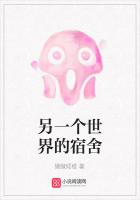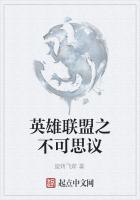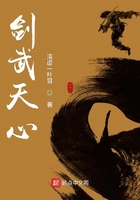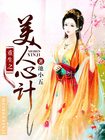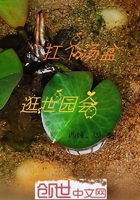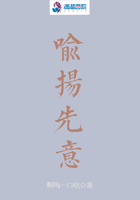Using the image study approach of comparative literature and the theory and methods of literary criticism,this book makes a historical investigation of the image of the United States in Chinese language fiction between 1980 and 2005,clarifying the development and evolution of the types of American images,analyzing the formation of foreign images in comparative literature,and exploring the value of cross-border images.Through the analysis of individual works of fiction,the book examines and offers conclusions on the issues of cultural differences and acceptance and shared cultural understandings and fusions in the globalized language context.
The book is composed of five chapters apart from the preface and the summary.
In the preface there is a brief retrospection of image study in comparative literature which points out the imbalance between China and the United States in this field of study.The preface defines the research goals,methods and significance.
Chapter one is a historical review of the image of the United States.Since the establishment of contact between China and the United States in 1784 the American image in China's modern and contemporary literature has evolved,but always with the Sino-American relationship at its core.The image of the United States has invoked both approval and criticism and included a mixture of positive and negative elements.In the late Qing Dynasty,the United States was viewed as a"powerful country surpassed by no other nation in the world".The United States was a symbol for democracy and science inthe new culture movement of the early twentieth century and was one of the Allies in World War Ⅱ.These positive images,however,contrast with the negative images of the United States as standing for racial discrimination at home and the practice of imperialism abroad.Through comparison of similarities and differences between China and the United States,sober-minded wise Chinese writers express their great admiration for America's advanced civilization,criticize the corruptive side of its society,and present a complex image of the United States having elements both positive and negative.
Chapter two is an analysis of the image of the United States in Chinese language fiction in the 1980s.This period is strongly characteristic by"political stereotypes".Whether it is the description of the American opportunists who came to China in the early 1980s or that of the depoliticization of the image of the United States,or"the spiritual other",the core is"politics"."American identity","Voice of America","the gilded heaven of the United States"is the image that Chinese people have in their minds.However,the tone of these writers is ironic and critical.The image of the United States in Wang Meng's fiction series New People on the continent is etched with the deep memory of the Cultural Revolution,demonstrating the conflicted post-Cultural Revolution view of the United States among Chinese intellectuals.The basic tone of Wang Meng's fiction series is tragic.Zha Jianying's Icy River in the Forest depicts the"material and spiritual other"image from the angle of depoliticization,portraying Chinese youth as searching endlessly for the value of human life without ever finding spiritual consolation from the United States.The image of the United States in the 1980s,abstract rather than realistic,is that of a politically stereotyped advanced capitalist country.
Chapter three is an analysis of the image of the United States in Chinese language fiction in the 1990s.During this stage,the images of the United States in Chinese fiction begin to reflect a broader view of American society.A wide variety of American images are portrayed,including synchronological explorations of American cities,cross-national sex and romance,fantasies of the United States,and historic views of American racism,creating a panorama of the United States.The city of New York is described frequently as a sensational"American dream","paradise","hell",and"site for experimentation",to the extent that these stereotypical terms became accepted views of New York among theChinese public.The theme of Sino-American marriages,virtually unheard of in the 1980s,emerged as a dominant image of 1990s fiction.The materialistic relationships in these novels defy the"the West saves the East"myth of Chinese-American romances in western fiction and invoke instead a strong and independent China.The Chinese"American/Western fantasy"arises from blind adulation of foreign countries and fosters a type of self-Orientalism.From the images of American racism in different historical periods,the book examines the historic antecedents of white supremacism.The panoramic views of American society have to a certain extent thrown off the political ideological stereotypes of the previous eras to portray individual personalities that reflect the rich diversity of American society.
Chapter four is an analysis of images of the United States in twenty-first century Chinese fiction.The images at the beginning of this century demonstrate a clear shift in view to a perspective that reflects the multicultural aspect of American society.The images created are no longer based on a macro-view of the politics and economy of the United States but on a deeper personal exploration of the basic units of society—"people"—thereby revealing the basic nature of American culture and its commonalities with all humankind.Images of homosexuality in the United States serve both as realistic reflections of American life and to weaken the image of the powerful American.The American images here are associated with the pressures of modern life and spiritual crises.Driven by self-doubt,the Americans look to the East and find commonalities with Chinese counterparts,discovering common understandings that surpass race and culture,but with an appreciation for differences that forecasts a multicultural coexistence for humankind.
Chapter Five is a summary of the previous four chapters.
First is a summary of the historical development of the American image in contemporary Chinese language fiction.The development of American images in Chinese language fiction has undergone several stages,including the"political stereotype stage",the"social panoramic stage",and the"multicultural stage".
Second is a discussion of the American image as a multiple construct.This multiple construct operates on two levels.One is the compound construct of the images of the United States as a nation and as the American people;this exemplifies the interaction betweenthe environment and individual personalities in the process of creating foreign images.The second level is the product of many writers.The image of the United States has been created not only by mainland Chinese writers but by the cross-border,multiple perspectives of Chinese language writers all over the world.Finally,this chapter explores the issue of the replacement of American cultural values by Chinese cultural values in American images.This has been demonstrated in two ways.On one hand,China's interpretation of the world includes a view of the United States as representative of the West,closely linked to Europe.On the other hand,Chinese cultural values have been implanted in images of the United States.Here we find not only similarity-seeking universalist thinking and cultural acceptance but also the difference-seeking materialist utopianism and self-criticism,as well as the utilitarian approach of using"stones from another mountain".
Finally,the book explores the multiple significance to China of the American image.As"the other",the image of the United States has multiple values.The creation of"the other"not only strengthens our understanding of"the other"but also can,within the scheme linking"the other"and"the self",facilitate the construct of"the self"and thereby,in the comparison between"the other"and"the self",provide for reflection upon"the self".
Key words:American image Literary imagination Cultural replacement Contemporary Chinese language fiction







